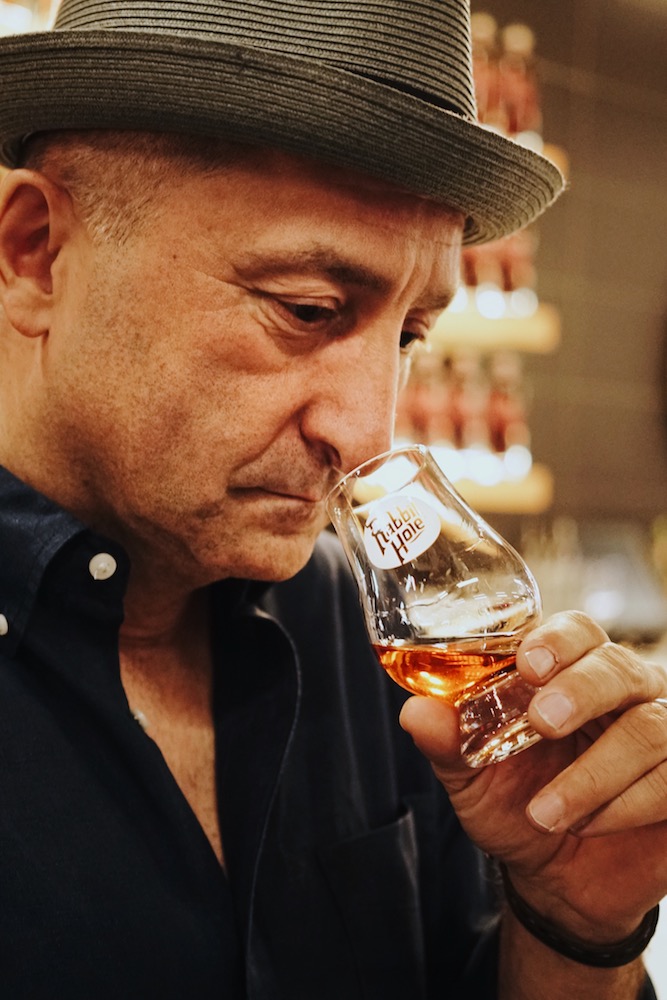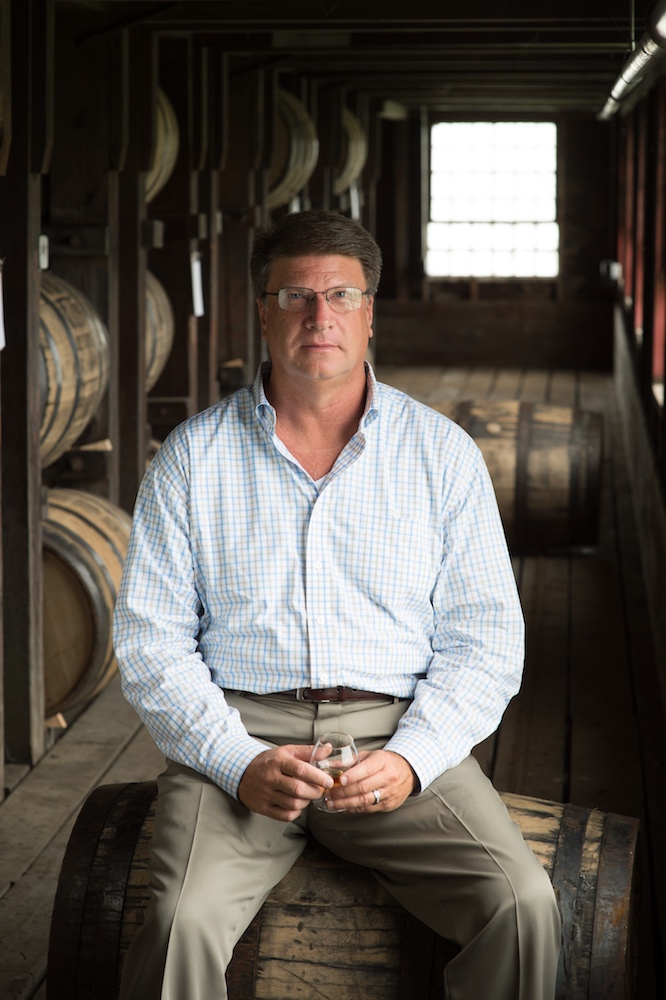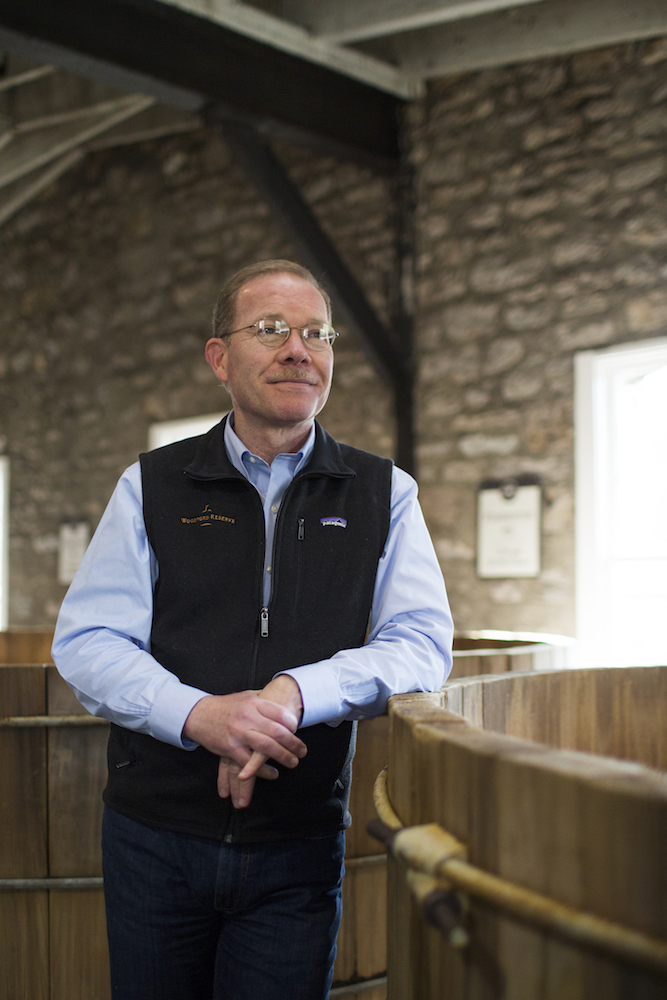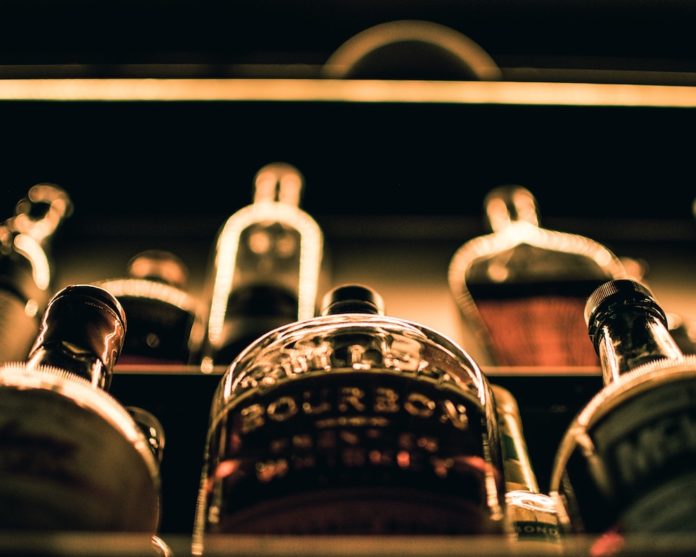Brown spirits continue to boom in America. Although consumer education remains a bit behind — many people still don’t know the difference between bourbon and whiskey — interest in distilled spirits is very high.
This is obviously great news for distillers, distributors and retailers alike. The depth of consumer interest has spurred numerous new brands to emerge in recent years. Product innovation also has reached new heights.
But are we approaching a point of too many brands? And is there such a thing as over-innovating in whiskey? These are possible points of concern in 2020.
Below we try to answer both questions, while also looking at seven major trends that will shape the American whiskey market in this new year.
1) Younger Whiskey Tasting Better
“Young” and “good tasting” rarely go together when describing whiskey. Particularly in today’s craft boom, when a number of cash-hungry new-wave distilleries rushed product onto shelves with unmellowed whiskey that was still sharp and raw. That’s hardly a way to build a brand: charging $65-and-up for an off-flavored whiskey that needed more time in the barrel.
But at the same time that these bad apples rushed out products, other distilleries put in the time to figure out how younger whiskey could taste better.
The result has been a boom of bourbon, under five years old, that comes across the palate as being much older. How did some producers accomplish this unlikely feat? The craft movement has brought rising levels of distilling expertise, knowledge and innovation. Add all that up, and suddenly the smarter distilleries can make younger whiskey that’s well worth bottling.
Among the newer producers leading this charge is Rabbit Hole. Owner/Founder Kaveh Zamanian says he never intended to release younger whiskey, but when tasting through early batches, he liked the results enough to bottle. Expertise and innovation came through in the end.

“With over 200 years of combined industry experience, and several veterans of the industry involved in training of our team, there is no question in my mind that our distillation expertise is a factor in our success,” says Zamanian. “It’s one thing to produce a good batch of whiskey; it’s another to do it with precision and consistency batch after batch.
Better production techniques created a better whiskey.
“Wholeheartedly, I believe that our proprietary cooking process coupled with the use of malted grains brings out more flavors and creates a much more interesting whiskey, which makes age less of a factor because the flavor really comes through in the glass,” Zamanian adds. “We also put the liquid in the barrel at 110 proof and never chill filter our products, both of which are choices that preserve more flavor. Last but not least, we have always used toasted and charred barrels . . . We don’t take short cuts and definitely don’t sacrifice quality for bottom line. It’s the combination of all of these factors.”
Rabbit Hole is certainly not alone among top-level craft distilleries that have found flavors earlier through innovation and expertise. As the level of knowledge in the industry continues to expand, look for more brands to bottle quality products earlier.
“I’ve never been too hung up about a whiskey’s age. It’s about maturity,” says Wes Henderson, co-founder and CIO of Angel’s Envy. “So what if it’s young? If it’s young, and a distillery’s transparent about it, and the whiskey is good, then that’s great.”
Another factor that’s driving this trend is the continued popularity of high-rye mash bills like Bulleit, Four Roses and MGP. Because rye achieves flavor faster — 100% ryes can reach maturity in 2-3 years — this has allowed high-rye bourbons to mature faster as well.
“You can’t do that with a wheated bourbon, because they’re too soft,” says John Little, CEO and master distiller at Smooth Ambler Spirits. “People in this business are learning that products that have more rye can produce mature notes faster.”
2) The Next Evolution in Oak
As brands continue to innovate, look for more distillers to flex their creative muscles in employing oak.
Firestone & Robertson Distilling Co. recently began a program of aging in numerous kinds of oak: port, sherry, muscatel, cognac, tequila, rum and more. Beyond releasing oak-specific expressions in the future, this also provides their blender with a bounty of flavor options to piece together the best blended products.
In other words, unusual oak is no longer just for finishing.

“I think brands across the spirits category will start to experiment with more unique types of wood in the initial aging and not just in the finishing process,” says Henderson of Angel’s Envy. “There are unlimited possibilities of what kind of woods can be used, and it’ll be interesting to see what brands are choosing to work with as innovation grows across the category.”
On a simple level, it comes down to the whiskey category already being saturated with barrel finishes that have become too familiar for today’s consumers.
“True innovation in wood finishing is becoming more difficult to do since we first introduced varietal wine (Chardonnay Finish 2006) and non-oak barrel (Maplewood Finish 2009) finishes to the market,” says Chris Morris, master distiller at Woodford Reserve. “Since so many varied types of finishes have been used in the industry I think the next evolution we will see are more blends of finishes like our Four Wood (2011).”
3) Growth in Blended Whiskey
As Morris says, we should expect a rise in premium blended whiskeys in 2020 and beyond.
Thanks in part to wine (think: California reds) “blended” is no longer a dirty word in the minds of consumers. It has evolved beyond the old meaning of “cheap.” Instead, the term “blended” likely means nothing to modern drinkers. For the same reason that some brands show age statements while others do not, the surest way to appeal to consumers today is through quality. People do not care how old a whiskey is — or what it’s made of — so long as it tastes great.
One brand that has helped establish this newer trend is High West. Purchasing whiskey from various distilleries and combining them into unique blends, this fast-growing brand has released some of the most popular expressions on the market today. And while other companies may not aggressively source ingredients this way, it’s likely we’ll see more American whiskey blends hit shelves as new high-end releases.
It’s another layer of innovation, producing new products and flavors for consumers to buy. Still, Henderson of Angel’s Envy cautions against distilleries leaning too much into this strategy, and becoming blinded by the flavor possibilities.
“Businesses can get on the gerbil wheel or innovating for the sake of innovating,” he says. “Don’t say something unless you have a reason to say it. You don’t have to come out with a new whiskey release every six months ago.”
4) Store-Pick Single Barrels
A common way that retailers have differentiated their offerings in recent time has been through store-pick single barrels. These programs are a win-win. They grant retailers opportunity to pick their own barrels — often by visiting distilleries, where they can deepen bonds with the brand teams — before offering customers a product that is not available anywhere else. (Store picks have even expanded into tequila.)

“Retailers love to have unique offerings to attract and develop a loyal clientele base. Store barrel picks allow them to do this,” says Morris of Woodford Reserve. “They are also a useful tool in building a store-focused ‘Whiskey Society’ around to that same end.”
JJ’s Wine, Spirits & Cigars of Sioux Falls, SD, has taken “whiskey society” to another level. The retailer operates a system for customers wherein they accumulate points for certain whiskey purchases, points they can trade in for the right to buy allocated products like Pappy’s of Buffalo Trace Antique Collection. And what bottles are worth the most points? Naturally, that would be JJ’s store-pick single barrels.
5) The Battle for Shelf Space
While American consumers have never been more interested whiskey, one might worry that the category is approaching the same problem already plaguing craft beer. There simply is not enough room on the retail shelves for all these new products. Particuarly when you add in all the legacy whiskey brands, which are experiencing sales growth of their own.
“There’s probably going to be a leveling off of the number of new brands coming to market because of shelf space,” says Henderson of Angel’s Envy. Which is not to suggest that the whiskey boom is about to bust. “Domestically, I truly believe that the market is going to continue to grow exponentially,” Henderson adds. “Demand will continue to go up.”
Which means greater competition for the brands that do have shelf space. It’s not enough anymore just to have a retail presence. “Consumers are so much more educated today about the nuisances of whiskey,” says Henderson. “You have to have honest conversations with consumers, because they now care about things that they did not care about years ago.”
Authenticity, stories, uniqueness — these are what help brands stand out on today’s overcrowded shelves.
“One of the ways that Rabbit Hole stands apart is through our unique mash bills,” says Zamanian. “Each of our bourbon recipes consists of 30% malted grains. There is no American Bourbon brand that can make that claim of 30% malted grains in their bourbons. I believe this is what differentiates Rabbit Hole’s from the proliferation of American whiskies on the market today.”
And that’s what it takes to reach whiskey consumers in the current market. Rabbit Hole has begun printing its unusual mash bills on its packaging. More brands will take a similar approach in 2020: highlighting for consumers what makes that whiskey different.
“Quality has become the basic stakes for reaching the table right now,” says Jeff Agdern, SVP of new brand ventures at Pernod Ricard. “The reality is that there’s a lot of good distillery products that are flooding the retail liquor shelves. The only way that a consumer will be convinced to pick up your bottle is if they see a distinctive message on it.”
At the same time, this runs the risk of another pitfall that has tripped up craft beer in: over-innovation. Brands releasing too many different takes on their core whiskey can confuse and overwhelm the consumer, while moving too far away from traditional flavors.
“Unusual mash bills really need to be well researched if that is to be the product’s ultimate reason for being,” says Morris of Woodford Reserve. “Our experience tells us that a seemingly dramatic grain flavor impact on a new make spirit lessens as the product matures in new, charred barrels or in flavorful finish barrels.”
6) Whiskey Terroir and Provenance
Another way that some brands have chosen to stand out is by showcasing local ingredients in their yeast, mash bills, oak selection and more.
Given the emphasis nowadays on localness in the broader craft market, we see this movement only expanding in whiskey in 2020 and beyond. And it comes at a time when many brands are arguing for a sense of terroir in whiskey, similar to how the term is used with wine.
“Terroir is definitely a component that lends to the uniqueness of a whiskey,” says Michter’s Master Distiller Dan McKee. “For example, like grapes, grains grown in different regions, climates and soils will affect the makeup of the grain. This is very impactful on how flavor profiles are created.”

Some writers and other industry professionals have argued against whiskey terroir. Their counterpoint includes the belief that terroir is lost when the original grains go through such an extensive, dramatic manufacturing process as distilling.
“Think about it. You’re putting ‘of the earth’ into a fermented stew, which is then heated with catalytic effect in a pressurized, closed environment made of metal copper, and then distilled and taken apart in cuts and finally put into a barrel,” says Robin Robinson, longtime whiskey writer, consultant and former brand ambassador for Compass Box Whisky Company. (Robinson recently published on this subject as part of his new book, The Complete Whiskey Course.) “I don’t see how there can be any ‘of the earth’ left. As soon as you light the fire under the pot, that’s the end of terroir.”
Still, a growing number of whiskey-makers say it’s possible to capture the unique flavor of a region in the bottle.
“Our work with local farmers, maltsters, cooperages, and breweries allows us to celebrate every part of the Pacific Northwest culture and agriculture,” says Chris Riesbeck, global commercial director for Westland Distillery, a leading producer behind the terroir movement. “We treat raw materials with the respect they have always deserved but rarely received. When you buy a bottle of Westland you aren’t just appreciating the work being done by our production team. You are engaging, supporting, and promoting an entire community built around the provenance of our region.”
7) The Secondary Market Remains Influential
The prices of popular whiskeys have ticked up at some retail stores as owners keep an eye on ballooning prices on the secondary market. The presence of these resale markets on Facebook, Instagram, reddit and other sites have also led to runs on retail stock for brands that have captured the internet’s attention (think: Blanton’s).
Do distillers care that their rare bottles routinely go for higher prices outside of retail?
“The resale market for whiskey is a fascinating part of our industry and one that I’m genuinely interested in. I’d be lying if I said I didn’t frequent the auction sites,” says Riesbeck, of Westland. “From the perspective of the distillery, it’s always exciting to see that the demand for our limited releases like Garryana or Cask Exchange still outweighs our growing supply of them.”
“With that being said, I’m sure that I have some of the same reservations that others in the industry have also had where you run into people buying up large swaths of a particular release with no motivation other than profit,” Riesbeck adds. “If that keeps a fan from getting their hands on a bottle of our latest release, that is certainly frustrating and disappointing. You don’t create limited releases with the secondary market in mind. But if the quality is great and the supply is limited, it’ll undoubtedly find its way there.”
And a certain subset of consumers will undoubtedly remain obsessed with this market.
“I sometimes think that the people who complain the most about the secondary market are the same people who have most benefitted from it,” says Henderson of Angel’s Envy. “Unfortunately we don’t have any control over the secondary market. We want as many people as possible to experience our products, and the secondary market is keeping them out of reach for many people.”
For consumer-conscious retailers looking to combat this problem, consider again how JJ’s Wine, Spirits & Cigars handles allocated whiskey. The retailer assigns points to certain purchases (with emphasis, naturally, on store-pick single barrels) that customers can accumulate for the right to buy the “white whale” whiskeys like Pappy’s and Buffalo Trace Antique Collection. And once someone has purchased one of these much-sought-after bottles, they cannot buy that same product for five years. Thus, more people have the chance to experience the whiskeys that have become scarcer thanks to the secondary market.
The Upshot
Unlike beer, American whiskey remains very much in growth mode. Although newer distilleries may struggle to achieve shelf space beyond local markets, brands that have built retail presence should expect another robust year.
We remain in a new golden era of American whiskey, with no imminent end in sight.
Kyle Swartz is editor of Beverage Dynamics magazine. Reach him at kswartz@epgmediallc.com or on Twitter @kswartzz. Read his recent piece What Has People Camping Out Overnight For Whiskey?
Feature photo by Brett Jackson on Unsplash.







[…] bourbon includes liquid from barrels 17 years old that date to 2003, the year that Chris Morris was named Woodford Reserve Master Distiller. Morris and Assistant Master Distiller Elizabeth McCall […]
[…] When we spoke this time last year, you predicted more premium blends and finishes. I assume that hasn’t […]
[…] American whiskey was already red hot before the health crisis. We remain in a new golden age for brown spirits, fueling massive expansion in craft distilling and […]